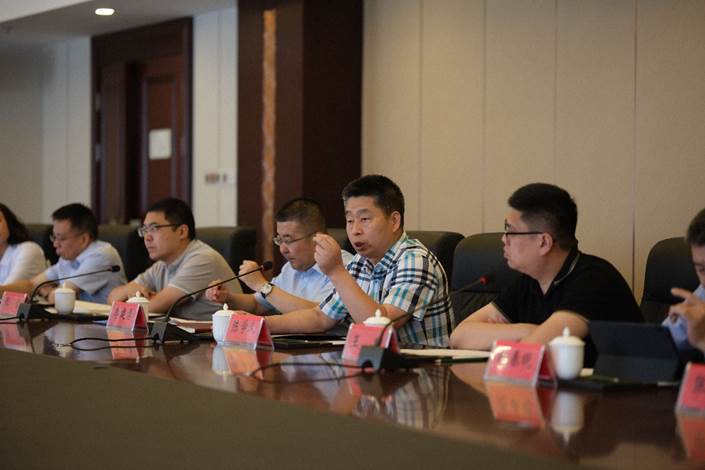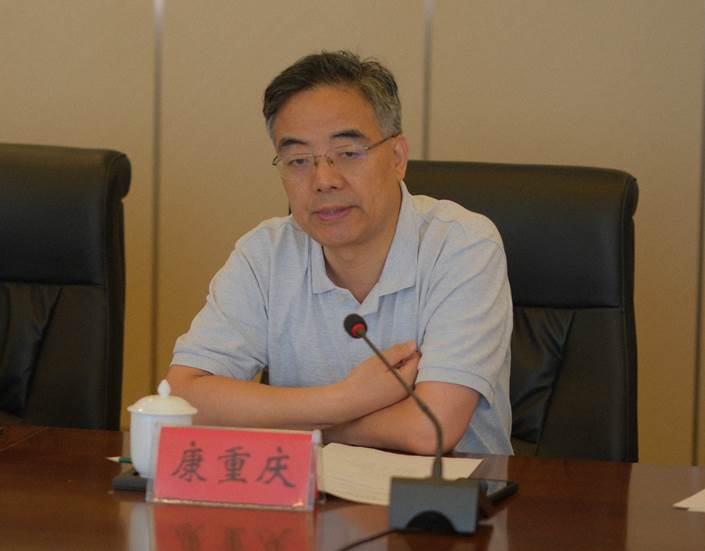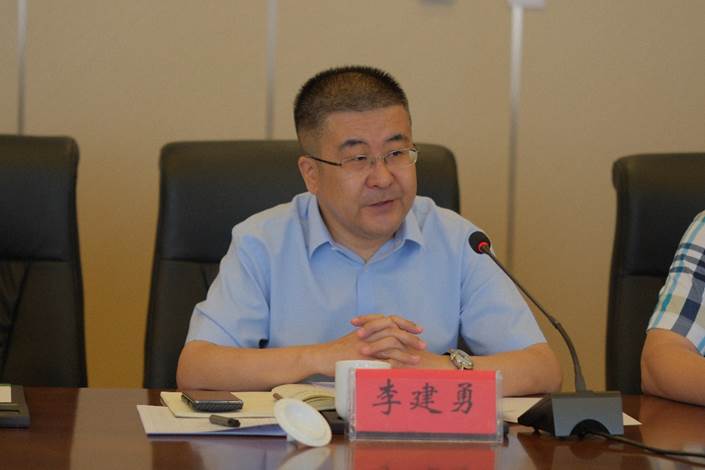On July 13, the symposium on collaborative energy computing between Hami City and the Department of Electrical Engineering and Applied Electronics (EEA), Tsinghua University was successfully held. Li Jianyong, a member of the Hami City Government Party Group and Deputy Mayor, attended the symposium alongside representatives from EEA to discuss how to promote the integration of energy and computing in Hami. Experts from the Energy Computing Integration (Hami) Research Institute, Huawei Technologies Co., and other organizations participated in the discussion.

Chen Xueyi delivering a speech
During the meeting, Chen Xueyi, Chairman of the Energy Computing Integration (Hami) Research Institute, introduced the historical context of collaborative energy computing and the development framework for energy computing integration. He emphasized that we are currently in an era of significant transformation in the energy industry, with the task of closely integrating four key areas: data, computing power, the power grid, and energy storage. This integration aims to achieve resource sharing and technological fusion, thereby effectively promoting the deep implementation of this major national strategy.
Professor Gao Wensheng, Executive Vice Dean of Energy Internet Innovation Research Institute, Tsinghua University, introduced EEA’s basic situation and five-pronged development structure known as “one department, two institutes, one lab, and one alliance.” Professor Lu Zongxiang, Executive Vice Dean of Sichuan Energy Internet Research Institute, Tsinghua University, presented the institute’s background and development plans. Professor Cheng Lin, Deputy Director of the State Key Laboratory for Operation and Control of New Type Power Systems, discussed the lab’s focus and research directions. Other experts, including Professor Guo Qinglai, Researcher Ci Song, Vice Dean Gao Feng, and Associate Researcher Du Ershun from Tsinghua University, shared their insights on energy computing collaboration.

Kang Chongqing delivering a speech
Professor Kang Chongqing, Dean of EEA, President of the Energy Internet Innovation Research Institute, and President of Sichuan Energy Internet Research Institute, provided four recommendations for the development of energy computing collaboration in Hami based on the previous speeches: first, to strengthen the advancement of applied technologies; second, to promote research in think tank work; third, to create national-level demonstrations centered around energy computing collaboration; and fourth, to emphasize talent cultivation and encourage students to focus on energy computing collaboration in their research topics.

Li Jianyong delivering a conclusion speech
In his concluding remarks, Deputy Mayor Li Jianyong emphasized that the Hami City Government places great importance on energy computing collaboration. He detailed Hami’s resource advantages, prospects for renewable energy development, industrial development needs, and its development positioning of “one benchmark and two models.” The benchmark is the model for high-quality economic development in Xinjiang, while the two models are exemplary cities for modernization in the Chinese context and for high-quality economic and social development in the five northwestern provinces. He stressed that Hami’s diverse industrial landscape, abundant resource reserves, favorable endowments, and vast geographical area provide the foundational conditions and rich application scenarios for supporting energy computing collaboration. The development strategy of energy computing collaboration is timely for Hami and aligns deeply with Hami’s “123456 development approach.” He expressed hope that this symposium would mark the beginning of deep cooperation between both parties and a willingness to collaborate with universities and research institutions to promote the construction of the Hami (Yiwu) Computing Power Innovation Demonstration Zone. This would involve considering and conducting research activities from a higher perspective, contributing to the country's energy security. He believes that, in the near future, the Hami energy computing collaboration project will inject strong momentum into the integration of energy and computing development in China.

At the symposium

















 News & Events
News & Events